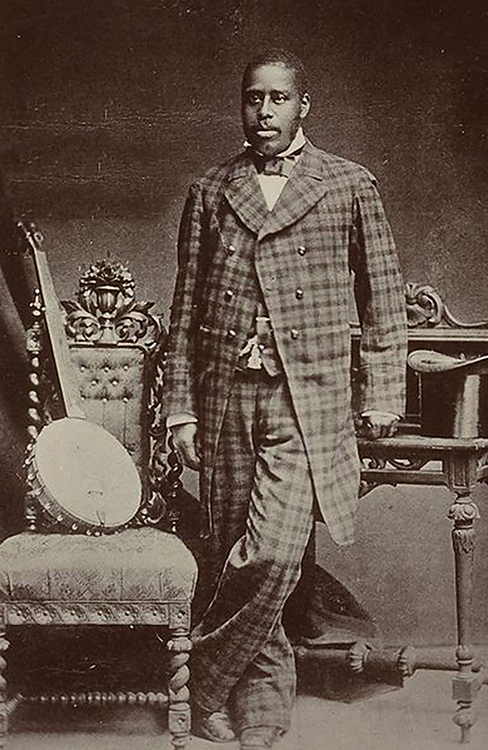
Horace Weston (1825-1890) was America’s most accomplished African American banjo artist of the nineteenth century. Along with Afred A. Farland (1864-1954), the other Paganini of the banjo, the two musicians were the most prominent performers to promote Samuel S. Stewart’s banjos during the 1880s and 90s. At this time, Stewart was considered the greatest Philadelphia builder of artist-grade banjos. The Center’s Old Town School of Folk Music Banjo Exhibition Records and Samuel Swaim Stewart Banjos documents much of these legacies.
Weston was born in Derby, Connecticut, the son of Jube Weston, a free-black Connecticut music and dancing teacher. Horace had an unusual inclination for music and spent his childhood mastering the accordion, violin, cello, double bass, trombone and guitar while also becoming an accomplished dancer. Despite learning the banjo later on in 1855, by the time he became a professional musician in 1863, he was most recognized for his extraordinary technique and performance on the banjo, according to his June 7, 1890, New York Clipper obituary.
As a performer Weston was described as a sociable and powerful musician who stood over six feet. An August 1878 Buffalo Post article about Weston’s “Uncle Tom’s Cabin” performances wrote, “Horace was dressed to kill at forty rods. He is about as black as the far end of a coal cart, and his tall silk hat was equally black…he looked as if he might be an undertaker. He wore a brass watch chain, strong enough to hold a bulldog, and he was, altogether, very set up in both dress and deportment.”
Throughout the 1880s Stewart continually trumpeted Weston’s musicianship and skill in his bi-monthly S.S. Stewart’s Banjo and Guitar Journal and these articles served as Weston’s endorsement of his complete banjo line. A full-page lithographic print of Weston first appears in the August-September 1884 issue of the journal, and both Weston and his wife, Alice, appeared in a second full-page lithographic image in the journal’s October 1886 issue, which highlighted the duo’s performances.
Stewart’s colorful dime novel, The Black Hercules OR the Adventures of a Banjo Player was published serially in the 1884 issues of his Banjo Journal and released as a book for 10 cents in October of that year. The story is about a poor fledgling banjo student, Jacob Coombs, who meets Weston during his travels to find a well-paying job playing the banjo that will enable him to marry his sweetheart. The serial novel was created to market Stewart’s banjos through Weston’s strategically placed endorsements of them during his fictional encounters with Coombs.
For more information about the Sousa Archives’ Stewart banjos and the Old Town School of Folk Music Banjo Exhibition Records contact Scott Schwartz at either schwrtzs@illinois.edu or 217-333-4577.